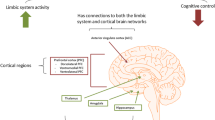Abstract
Tourette syndrome (TS) is a neurological disorder characterized by highest familial recurrence rate among neuropsychiatric diseases with complicated inheritance. Recurrence of Tourette syndrome was frequently observed in clinical. Unexpectedly, the mechanism of recurrence of Tourette syndrome was failure to elucidate. Here, we first shown that lipopolysaccharide(LPS) may played an important role in the recurrence of Tourette syndrome. The TS model in rats was induced by DOI (the selective 5-HT2A/2C agonist 1-(2, 5-dimethoxy-4-iodophenyl) -2- aminopropane). The rats were randomly divided into 4 groups:(1)Control;(2) Control + LPS; (2)TS; (3)TS + LPS. The results demonstrated that the LPS treatment significantly increased stereotypic score and autonomic activity. LPS treatment also significantly increased inflammatory cytokines such as interleukin-6 (IL-6), interleukin-1β (IL-1β) and tumor necrosis factor-α (TNF-α) in serum and striatum. Also, highly expressed TLR4, MyD88, P-NF-κBp65, P-IκBα in TS rats were increased respectively by LPS treatment as indicted in western blot analysis and immunohistochemistry analysis. Thus, it was supposed that lipopolysaccharide(LPS) may played an important role in the recurrence of Tourette syndrome and its mechanism was related to TLR/NF-κB pathway.




Similar content being viewed by others
References
Bloch M, State M, Pittenger C (2011) Recent advances in Tourette syndrome. Curr Opin Neurol 24(2):119–125
Bos-Veneman NGP et al (2011) Altered immunoglobulin profiles in children with Tourette syndrome. Brain Behav Immun 25(3):532–538
Chunhui Y et al (2017) Pilose antler peptide protects osteoblasts from inflammatory and oxidative injury through EGF/EGFR signaling. Int J Biol Macromol 99:15
Duan D et al (2014) Activation of the TLR/MyD88/NF-κB signal pathway contributes to changes in IL-4 and IL-12 production in piglet lymphocytes infected with porcine circovirus type 2 in vitro. PLoS One 9(5):e97653
Editor T, (n.d.) Recognition and treatment of Tourette's syndrome. Emerging Infectious Diseases
Feng Z et al (2011) Protective effects and mechanisms of sirtuins in the nervous system. Prog Neurobiol 95(3):373–395
Gan L, Mucke L (2008) Paths of convergence: sirtuins in aging and neurodegeneration. Neuron 58(1):10–14
Giedd JN et al (1996) Case study: acute basal ganglia enlargement and obsessive-compulsive symptoms in an adolescent boy. J Am Acad Child Adolesc Psychiatry 35(7):913–915
He F et al (2015) Association of IL-1α rs17561 and IL-1 RN rs315952 polymorphisms with Tourette syndrome: a family-based study. Int J Clin Exp Pathol 8(4):4182–4185
Jankovic, J., R. Gelineau-Kattner, and A. Davidson, Tourette's syndrome in adults. Movement Disorders Official Journal of the Movement Disorder Society, 2010. 25(13): p. 2171–5
Johnstone DM, et al (2015) Turning on lights to stop neurodegeneration: the potential of near infrared light therapy in Alzheimer's and Parkinson's disease. Front Neurosci, 9(Pt B). doi: 10.3389/fnins.2015.00500
Kanaan AS et al (2017) Pathological glutamatergic neurotransmission in Gilles de la Tourette syndrome. Brain A Journal of Neurology 140(Pt 1):218
Libert S, Guarente L (2012) Metabolic and neuropsychiatric effects of calorie restriction and Sirtuins. Annu Rev Physiol 75(1):669–684
Morer A et al (2010) Elevated expression of MCP-1, IL-2 and PTPR-N in basal ganglia of Tourette syndrome cases. Brain Behav Immun 24(7):1069–1073
Peterson BS, Leckman JF (1998) The temporal dynamics of tics in Gilles de la Tourette syndrome. Biol Psychiatry 44(12):1337–1348
Qin Y, Li H, Qiao J (2016) TLR2/MyD88/NF-κB signalling pathway regulates IL-8 production in porcine alveolar macrophages infected with porcine circovirus 2. J Gen Virol 97(2):445
Schreiber R et al (1995) (1-(2,5-dimethoxy-4 iodophenyl)-2-aminopropane)-induced head-twitches in the rat are mediated by 5-hydroxytryptamine (5-HT) 2A receptors: modulation by novel 5-HT2A/2C antagonists, D1 antagonists and 5-HT1A agonists. J Pharmacol Exp Ther 273(1):101–112
Schug TT, Xu Q, Gao H, Peres-da-Silva A, Draper DW, Fessler MB et al (2010) Myeloid deletion of SIRT1 induces inflammatory signaling in response to environmental stress. Mol Cell Biol 30(19):4712–4721
Shen B, et al (2017) Picroside II protects rat lung and A549 cell against LPS-induced inflammation by the NF-κB pathway. Inflammation, 1-10
Simmler LD et al (2016) In vitro characterization of psychoactive substances at rat, mouse, and human trace amine-associated receptor 1. J Pharmacol Exp Ther 357(1):134
Weng L et al (2017) Ampelopsin attenuates lipopolysaccharide-induced inflammatory response through the inhibition of the NF-κB and JAK2/STAT3 signaling pathways in microglia. Int Immunopharmacol 44:1–8
Zhang F, Li A (2015) Dual restoring effects of gastrodin on dopamine in rat models of Tourette’s syndrome. Neurosci Lett 588(1):62–66
Author information
Authors and Affiliations
Corresponding author
Ethics declarations
Funding
This project was supported by Program for the Human Resources and Social Security Department of Jiangsu Province–“Six Talent Summit”(WSN-061).
Rights and permissions
About this article
Cite this article
Hongyan, L., Zhenyang, S., Chunyan, W. et al. Lipopolysaccharide aggravated DOI-induced Tourette syndrome: elaboration for recurrence of Tourette syndrome. Metab Brain Dis 32, 1929–1934 (2017). https://doi.org/10.1007/s11011-017-0084-3
Received:
Accepted:
Published:
Issue Date:
DOI: https://doi.org/10.1007/s11011-017-0084-3




